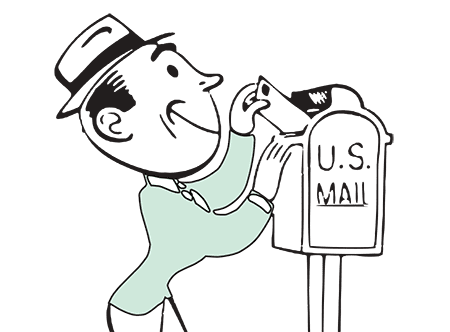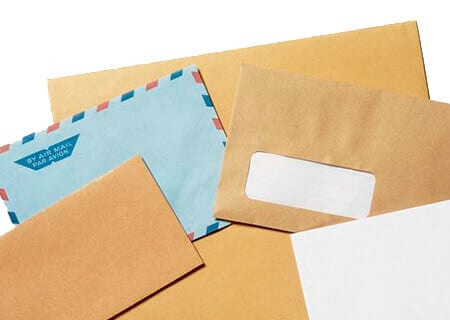What is the digital divide? And, what role do envelopes and paper play when it comes to the digital divide? The simplest explanation is that the digital divide represents the division between people with and without access to the Internet and computer technology. This gap is created by more than just physical access to smartphones, computer tablets and the Internet. It also includes an assumption of digital readiness or the ability to use those technologies. Many people don’t have the skills needed to use the Internet, a computer or smartphone, so there is a divide of digital readiness as well. Computer or technology illiteracy is a real thing and affects many people. The digital divide can be examined and subdivided into multiple causes created by different income levels, educational levels, the age of users and their geographical locations. Envelopes and paper build an extremely valuable bridge across this technology created chasm.
The Pew Research Center has published several recent studies examining the cause and effect of the digital divide. And although the digital divide is narrowing with increasing Internet use, broadband adoption and smartphone ownership, the digital lives of higher and lower income American remain very markedly different. In 2017, nearly 3 in 10 adults with an annual income below $30,000 don’t own a smartphone, while nearly half don’t have broadband services at home or a computer. In households making more than $100,000 per year, two-thirds of adults have home broadband service, a desktop or laptop computer, a tablet and a smart phone. Only 17% of low-income households have multiple devices.
How The Digital Divide Affects America
Many lower-income Americans are relying more on smartphones. In 2016, one-fifth of adults living in households earning less than $30,000 per year were smartphone-only Internet users, meaning they owned a smartphone but didn’t have broadband access at home. There are many other factors apparent when looking at the digital divide. Education also plays a big part in the divide. Only 4% of college-educated Americans don’t use the Internet compared to 41% of Americans with less than a high-school education. And only 4% of those with a household income of $75,000 or more don’t go online, compared to 24% of those who are earning less than $30,000 per year.
Age is another area where users show markedly different preferences. Older Americans are much less likely to use the Internet than younger generations: 44% of those over age 65 don’t go online, compared to 17% of those 50-64, 8% of those 30-49 and only 2% of those 18-29. Overall, adults ages 65 and older account for almost half (49%) of non-Internet users. After looking at this multitude of statistics it helps to remember one thing; regardless of age, education or income, envelopes and paper will always be available and are often still the best tool for a job.
Location is yet another facet of the digital divide and another reason to keep envelopes and paper close at hand. Rural Americans are using digital technology as it becomes more widely available, but there is still a significant gap in availability when comparing rural areas and higher population areas like cities and their suburbs. Nearly two-thirds of Americans now have a broadband Internet connection at home, compared to only a third in 2007. This still leaves a gap of about 10% difference when it comes to broadband Internet access in rural areas. Rural residents also use the Internet less frequently than their city counterparts. Eighty-percent of city dwellers use the Internet on a daily basis versus 58% of rural citizens. And almost 20% of rural Americans say they never go online. So, despite the pervasive spread of the Internet and Internet connectivity, envelopes and paper are still a valuable commodity.
Envelopes & Paper vs. Technology
There are several reasons for preferring envelopes and paper. Many people who use the Internet on a daily basis still prefer paper envelopes when it comes to dealing with important matters in their life. This includes receiving paper bills, insurance policies, tax documents and the like. Because of the widespread use of technology, many things can now get lost in the electronic deluge we face everywhere we turn. Receiving paper bills is a way of making sure the important things stand out and aren’t lost in the electronic noise and hubbub surrounding us. Paper and envelopes are also the great equalizer. They don’t require a high income or education level to access them, and they’re available anywhere and everywhere regardless of whether you have a broadband connection. They’re inexpensive, efficient and won’t break, run out of batteries or become obsolete.



